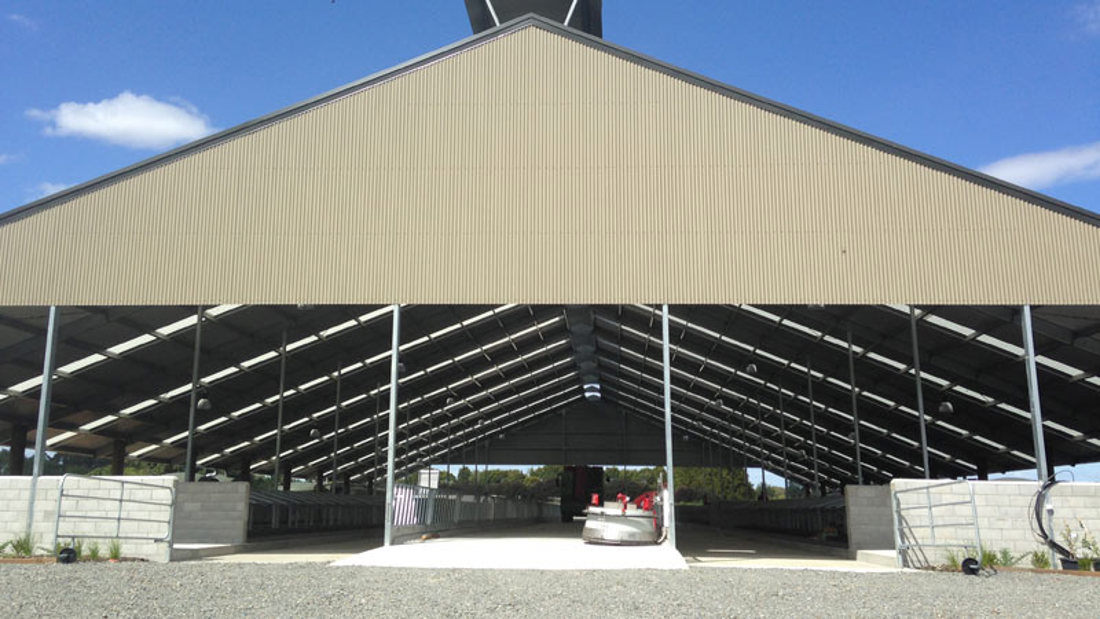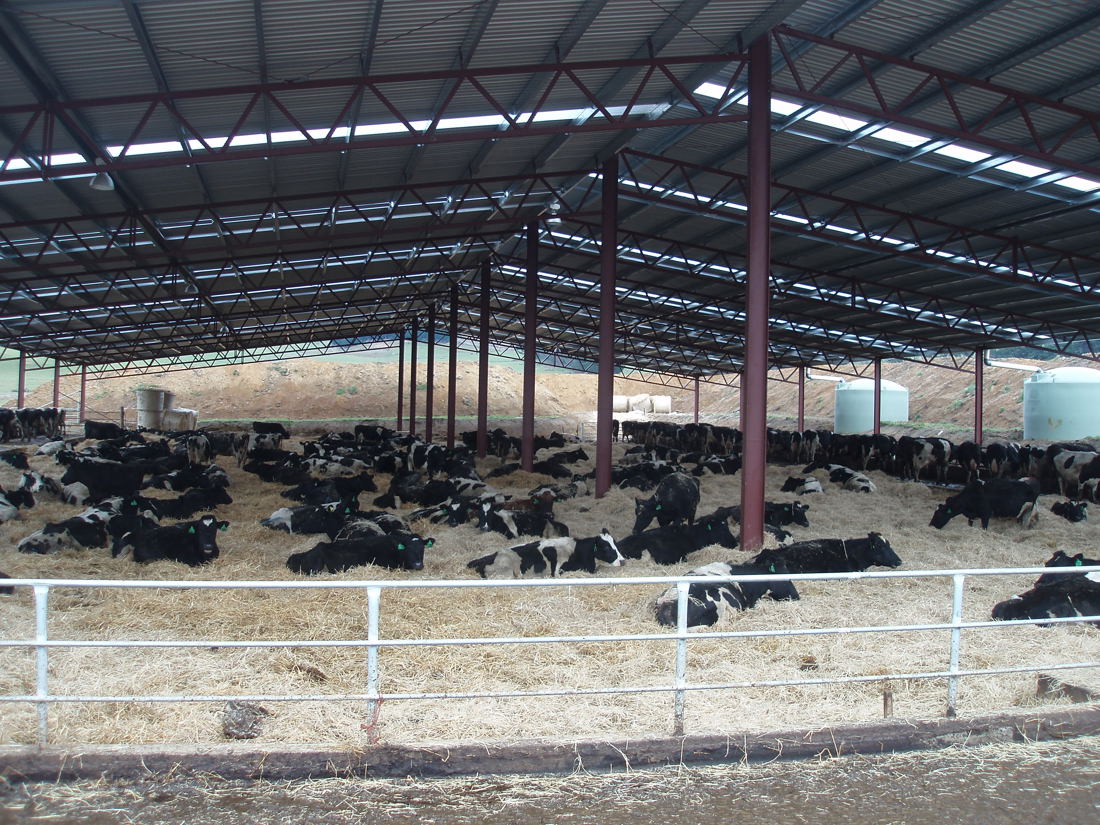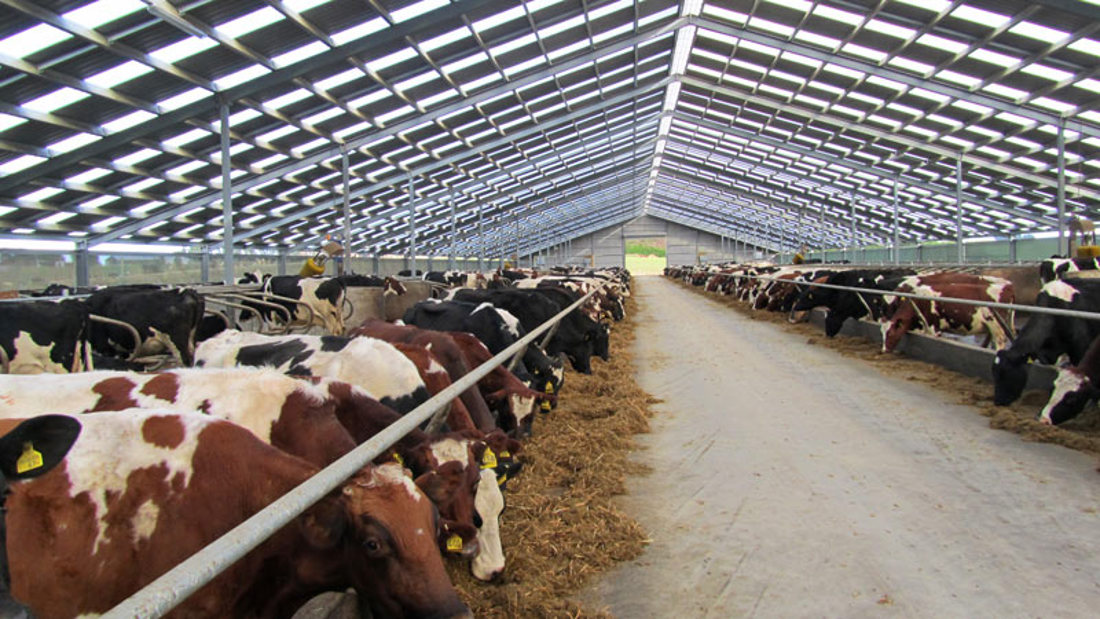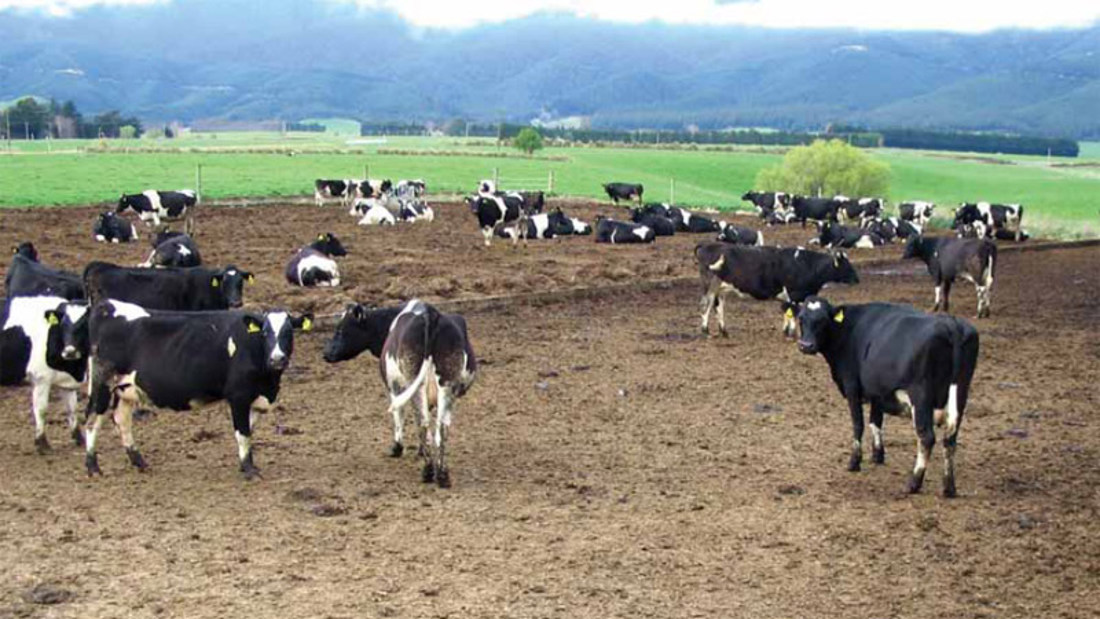Globally, our understanding of animal welfare has evolved. Instead of focusing solely on health and production, there is now a broader perspective that considers behaviour and affective state, which considers an animal’s experiences and overall wellbeing. A successful off-paddock system should balance cow comfort alongside environmental, financial, and practical considerations of the infrastructure.
When planning your off-paddock infrastructure, think about what a cow needs to be content and comfortable. By prioritising cow welfare in your design, you can create an environment that supports better health, productivity, and overall farm performance.
Bedding and lying areas
Provide well-drained, soft bedding materials like straw, sawdust, woodchip, or sand to keep cows clean and dry, reducing the risk of injuries and infections. Lying is an important behaviour for cows, and if the surface is suitable, they’ll spend 10-12 hours a day lying down to rest and ruminate. They need a minimum of 8 hours per day lying down.
Natural behaviours
Ensure adequate space for cows to move freely, allowing them to stand up and lie down naturally with sufficient lunge space. Dairy cow housing should be designed to allow for cows’ normal behaviours to prevent frustration and fatigue, which can impact their overall wellbeing.
Recognise that cows are social animals that establish a hierarchy through their behaviours and interactions. Housing systems should support these social behaviours to maintain harmony within the herd.
Area allocation
Getting the right area allocated per cow is essential for maintaining cow health, welfare and productivity. Adequate space for all cows enhances air quality by preventing ammonia buildup, allows staff to monitor cows effectively and reduces the spread of infectious diseases. It can minimise competition and aggression, ensuring all cows have access to feed and water, and provides high-quality lying areas for optimal rest, contributing to better overall health and increased milk production. Read more about area allocation in the Dairy cow housing guide.
Cow cleanliness
Clean housed cows are a strong indicator of good cow comfort and welfare, as cows naturally prefer to lie on clean, dry and comfortable bedding. Clean cows also have a lower risk of mastitis and lameness. If cows are consistently dirty, it may signal an issue with the facility, such as inadequate bedding management, improper scaping, or insufficient area allocation.
Poor ventilation can also contribute to damp conditions, preventing bedding from drying properly and increasing the likelihood of dirty cows.
Regular cow cleanliness scoring can help monitor your herd's health. Use the housed cow cleanliness scorecard to assess the cleanliness of your herd.
How to score your herd
- Timing and Location: Choose a time when cows are standing, such as an hour after feeding or during milking, to observe their cleanliness.
- Scoring Process: Randomly move through the herd and score each cow based on the dirtiest part (back, flank, tail, lower hind leg, or udder). Mark the appropriate box for each cow.
- Calculating Herd Score: Add up the number of cows that scored a 2. Divide this by the total number of cows scored to get the herd cleanliness percentage.
Number of cows to score:
- Less than 200 cows: Score at least 80 cows.
- 200-500 cows: Score at least 90 cows.
- More than 500 cows: Score at least 100 cows.
Ventilation
Ventilation is a critical part of good management. Ventilation is an air exchange process that brings fresh air into the building through planned inlets and pushes stale air out.
Proper ventilation maximises cow comfort and health by removing excess heat, odours and water vapour (from respiration and sweat) and reduces the effects of humidity. Designers and managers of barns must consider the indoor environment from the cows' perspective.
Shade
Providing adequate shade in off-paddock facilities is crucial for reducing heat stress, which can negatively impact cow productivity and welfare. Ensuring your cows have access to shade helps maintain their comfort and health, especially during hot weather.
In a shelter with a plastic transparent plastic roof, cows require a shade cloth that blocks at least 50% of solar radiation. It must be black or green in colour and placed high enough in the shelter for good ventilation. This setup not only protects cows from direct sunlight but also ensures good air circulation within the shelter.
If you plan to use your shelter during the summer months, or if you already do, consider installing shade cloth to mitigate the effects of heat stress on milk production and overall cow welfare.




